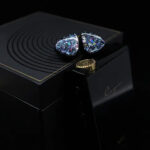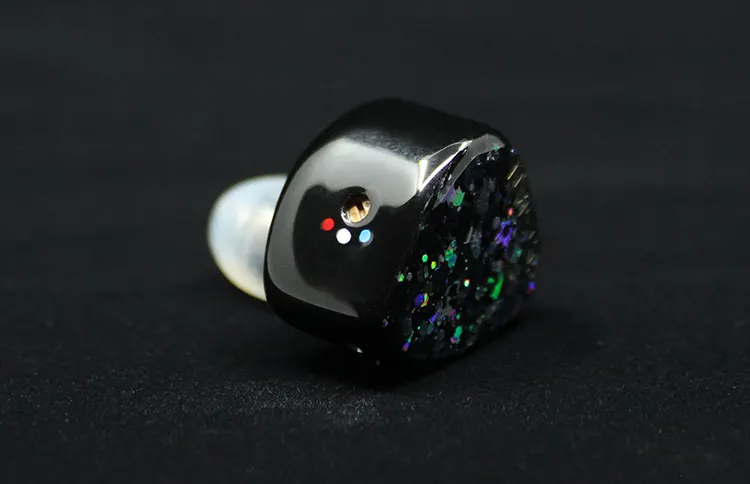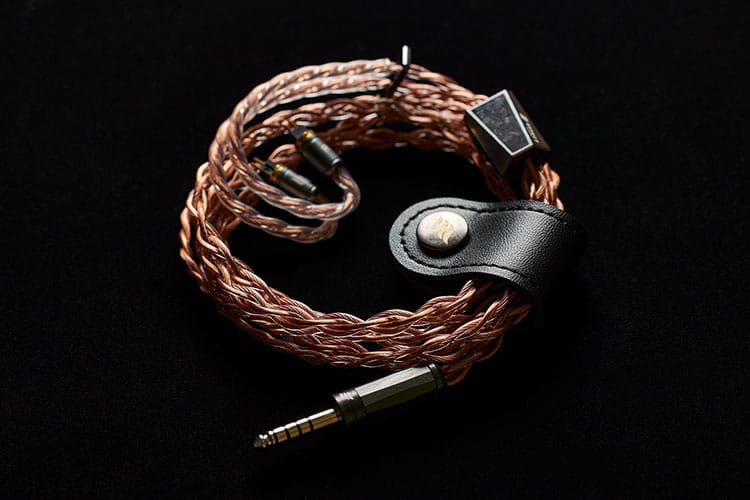We review the Elysian Acoustic Labs DIVA 2023, which is a high-end universal IEM consisting of 6 BA drivers with a 3-way bass rotary switch. It is priced at $1599 SRP.
Disclaimer: This sample was sent to us in exchange for our honest opinion. Headfonics is an independent website with no affiliate links or services. We thank Elysian Acoustic Labs and Effect Audio for their support.
To read more about Effect Audio gear previously assessed on Headfonics click here.
Note that this article follows our current scoring guidelines which you can read in more detail here.
Elysian Acoustic Labs has really hit the ground running in 2023 with its new releases of the Elysian Acoustic Labs DIVA 2023 and the flagship Annihilator 2023.
Lee, the founder of Elysian Acoustic Labs, brought his hobby and passion to life when he created the company in 2016 where he then began to share his tuning philosophy with the world.
Each IEM from Lee is handmade from scratch with the utmost care and attention. Tagged with the nickname “Songstress”, the DIVA 2023 aims to please the masses with Elysian Acoustic Labs’ intricate and highly adaptable tuning. But how do its 6 balanced armature drivers stack up? Read on to find out.
Tech Highlights
The Elysian Acoustic Labs DIVA 2023 has a simple configuration and features 6 Balanced Armature (BA) drivers.
On paper, the setup does not seem to follow the current market trend where IEMs are starting to lean towards a tri-brid setup or ones that feature bone-conduction technology.
After listening to the DIVA 2023 for countless hours, it is clear that the aim was to utilize 2 balanced armature drivers to cover each of the 3 main sound frequency spectrums: 2 for bass, 2 for mids, and 2 for the treble.
The most interesting part of the tech features of the DIVA 2023 is its “3-way bass rotary switch”. The rotary switch is essentially a small screw located at the top of each IEM shell which can be turned in 3 different directions to increase or decrease the sub and mid-bass.
At the top of each shell above the switch, 3 colored dots indicate the bass level applied: Blue for high or extra bass, white for the default bass, and red for low or reduced bass.
I have seen different implementations and uses of switches on different IEMs but Elysian Acoustic Labs’ execution of the rotary switch on the DIVA 2023 is flawless.
The transition, usability, and immediate tuning effect is a welcome add-on as it gives the user a unique and flexible listening experience. Flexible in the sense that the DIVA 2023 can alter its tuning on the fly to morph into the sound signature of the song or one’s own preferences.
Design
The DIVA 2023 comes in 3 colorways: obsidian black, lapis blue, and ruby red. Each colorway has its own unique vibe.
The faceplate is sprinkled with differently sized hexagonally shaped glitter which is supported by a black, blue, or red background. To top it off, the word “Elysian” in gold lettering sits along the edge of the faceplate.
Under direct light, the faceplate sparkles, giving the IEM a nice yet simple finish. The unit under review is the obsidian black version and I must say that the overall design is simple, yet elegant. The IEM shells are made out of a robust acrylic material which has a smooth texture to it.
At the top of each IEM shell, you will find the rotary bass switch with the 3 different bass setting indicators. Towards the IEM cable connector slots, a decently sized bass vent can be found. The bass vent itself is finished with a small inverted, metal cone.
At the other end, a metal nozzle can be found which is covered by a metal mesh to avoid any unwanted debris from entering the IEM chamber. The nozzle is not long and is rather short and wide. It does have a wide opening so this needs to be considered when trying to pair ear tips as wider bore ear tips fit better with the DIVA 2023.
The overall size of the DIVA 2023’s IEM shells is quite large. This is particularly interesting given that there are only 6 balance armatures per IEM, however, its larger size is mostly due to the rotary bass switch mechanism which is also housed inside.
Comfort & Isolation
As the overall size of the DIVA 2023’s shells is large, this did not lead to any comfort issues during testing. In fact, given that the DIVA 2023 is quite lightweight, it goes somewhat unnoticeable after a while during use.
One caveat: it’s not a one size fits all IEM and therefore if you have had issues with larger-shelled IEMs in the past, it is worth taking this into consideration with the DIVA.
Another aspect that is important is the ear tips you select. If the stock ear tips are used, this provides a strong grip around the nozzle which in turn leads to a comfortable and snug fit of the IEM.
During testing, there were no issues with regard to sound isolation where there was no sound leaking in or out of the IEMs.
Tips
The DIVA 2023 comes supplied with 3 pairs of Spinfit ear tips ranging from small, medium, and large sizes. The ear tips are akin to the Spinfit CP100 although it is not officially written on the packaging. The ear tips provided have a clear shell and a hard, thick core.
The ear tips have a very wide opening which is suitable for the wide bore on the DIVA 2023’s nozzle. The ear tips are also made out of a clear, yet grippy silicon which helps to keep the IEMs securely fitted at all times whilst adding to the level of comfort during long listening sessions.
However, the fact that only 3 pairs of ear tips are included is a bit of a letdown. It is also a missed opportunity from Elysian Acoustic Labs as they could have really capitalized on the “flexible” tuning options of the DIVA 2023 by further providing different types and styles of ear tips to support this premise.
Stock Cable & Select Cable Pairings
The DIVA 2023 comes equipped with an Effect Audio Ares S cable as its stock cable. The Ares S is a decent entry-level copper cable with a 4-wire Ultra-Pure OCC copper element and a 24 AWG gauge geometry.
The stock cable has a copper color appearance and is supple making it comfortable to use. It comes with an Effect Audio TermX 4.4mm balanced termination and ConX connectors.
It also uses Pentaconn Ear connectors to attach the cable to the IEM. As this is not a commonly used connector type, it is worth noting if you are deciding to cable roll your existing aftermarket cables with the DIVA 2023.
The Ares S is a good match for the DIVA 2023 as it allows the DIVA 2023 to perform at excellent audio quality levels. As the Ares S provides that slightly warm timbre and mid-bass emphasis, this synergizes well with the DIVA’s rotary bass switch and different bass level settings.
Could you possibly find a different cable pairing that provides a different coloration and sonic enhancements? Absolutely.
I paired many cables with the DIVA 2023 and found that pure copper-based cables worked best as well as silver and gold-plated copper cables. The reason for this is from copper’s natural mid-bass and mid-range coloration which bodes well with the DIVA.
An example of a pairing we focussed on was that of the Effect Audio Cadmus Founder’s Edition which you can read up in our earlier review.
Packaging & Accessories
Elysian Acoustic Labs has encased the DIVA 2023 in a cube-shaped box that towers majestically in size. With its dark blue color, the lid has the Elysian Acoustic Labs logo printed on the top in gold font. It’s a sturdy yet elegant box that reveals a small chest of drawers once the main lid is removed.
On the top above the first drawer, you will find the IEM case surrounded by the IEMs themselves. Functionality-wise, the IEM case is excellent. It comes in a rectangular box shape that is finished with a black suede texture.
This black suede texture gives the case a premium finish. However, it is a “dust magnet” so be careful to avoid placing it in dusty areas or have a lint roll handy to clean it.
The case provides ample space big enough to fit the DIVA 2023 and whatever cable it’s paired with. There is also a small mesh section under the lid where you can put any small accessories in. The lid closes via a small magnetic strip located under the front edge of the lid.
This is followed by the first drawer which houses the stock cable and the second drawer which contains the ear tips, cleaning cloth, warranty card, and a cleaning brush.
Most importantly, Elysian Acoustic Labs included a tiny screwdriver in the second drawer to allow the user to change the bass levels via the 3-way bass rotary switch. There’s only one screwdriver included so try not to lose it!
Sound Impressions
The following sound impressions were made with the DIVA 2023’s stock cable, ear tips, and the Cayin N8ii DAP as the source.
Summary
The Elysian Acoustic Labs DIVA 2023 is a midrange gem. It’s one of the most interesting and adaptive IEMs currently available on the market at the time of writing. It conjures up its own exciting sonic recipe by starting with its forward midrange which is then supplemented by a normal, elevated, or recessed bass response and spherical soundstage.
As the DIVA 2023 features 3 bass settings and therefore tunings, we will go through each tuning’s bass, midrange, and treble impressions separately and they will be named as default/white (white or normal bass setting), Blue (or elevated bass setting) and Red (or low bass setting) tuning.
White or Default Tuning
This is the Elysian Acoustic Labs DIVA 2023 default tuning with a focus on the bass frequencies leaning towards the sub-bass rather than the mid-bass.
Bass
The overall bass presentation comes off as punchy with a slight boost in the mid-bass. This provides an excellent foundation for the rest of the frequency response of the DIVA. The sub-bass digs deep when called upon and provides fantastic ounces of rumble and texture.
The mid-bass comes with the same quality of texturing however there is a slight boost that brings the mid-bass ahead of the sub-bass but behind the mid-range. Drums and electronic synthesizer bass notes have fantastic texturing to them where there is a fast attack and punch against each note.
Mids
The mid-range is where the party starts: it’s lush, smooth, and highly resolving. The lower mid-range sits in line with the mid-bass whereas the center to upper mid-range sits at the forefront of the overall frequency response.
What you end up with is a very centered or forward vocal and instrumental presentation from the DIVA. Male and female vocals sound natural and very engaging. Timbre-wise, the DIVA 2023 in its default setting has a slightly warm timbre.
Treble
Within the treble region, this is where the DIVA 2023 starts to taper off where the overall presentation is neutral towards dark. The lower treble is forward but not as far front as the center to upper mid-range.
As a result, higher-pitched vocals and instruments still feel at the front of the overall frequency response. The center to upper treble comes off as neutral and relaxed and sits just below the mid-range and lower treble.
Treble extension and quality are very good where high-hats and cymbals come off with a decent level of clarity and detail.
Staging
The soundstage is very wide and tall. The overall stage is wider than it is tall however the depth of the stage is quite deep and what you end up with is a spherical soundstage presentation.
This bodes well with the DIVA’s mid-range capabilities as it allows the vocals to really stand out but also gives the listening a more dynamic and engaging experience as the mid-range is allowed to play with the depth of the stage.
Imaging capabilities are very good where instruments and vocals are placed with pinpoint accuracy around the stage. The key word is “around” as the placement of instruments appears to come from above and below the stage due to the impressive stage depth.
Blue Tuning
The Blue tuning on the DIVA 2023 is what I like to call the “Fun Factor” tuning. If you wanted extra mid-bass slam and sub-bass rumble from the white tuning, the blue setting does the job.
The Blue tuning doubles the amount of sub-bass and mid-bass giving drums and bass notes plenty of authority. The mid-bass does become a bit bloated with slower decay.
This is not to say that the mid-bass quality decreases, it is just to stress the overall tuning has changed where the mid-bass becomes the forefront of the tuning which now sits ahead of the center and upper mid-range. To my ears, there was very minimal bass bleed into the mid-range.
The timbre is slightly warmer than the default tuning given there is now more mid-bass. With that in mind, the center to upper mid-range now sits slightly behind the mid-bass but not as far back so it still allows vocals and instruments to be the star of the show.
The lower mid-range gains more tactility as the lower mid-range notes gain more volume and thickness. The quality of the mid-range is still excellent where vocals and instrumentals sound lush, smooth, and highly detailed.
The treble sounds slightly darker under the blue setting compared to the default tuning. This is probably due to sound perception as the bass frequencies are now more elevated and forward. The quality and extension of the treble region are very good.
With regards to soundstage and imaging, there was no significant change compared to what was discussed earlier under the default or white tuning.
Red Tuning
The red tuning results in a more recessed sub and mid-bass. The sub-bass does not dig as deep and the mid-bass is now even punchier and faster compared to the default tuning.
This is not to say that the mid-bass tapers off completely as there is a small boost in the mid-bass but there is a noticeable dip in the amount of rumble and slam from the sub-bass and mid-bass compared to both the white and blue tunings.
The mid-range still shines throughout the overall frequency response as the center to upper mid-range is at the forefront of the overall sound.
The lower mid-range now becomes more forward, albeit now thinner with less volume, than both the white and blue tuning which is due to the lower mid-bass presence. The quality of the mid-range still remains unchanged.
The timbre is more or less the same as the default or white tuning and comes off as slightly warm. Treble-wise, the overall presentation is similar to that of the default or white tuning and comes off as neutral where it sits slightly behind the mid-range.
With regards to soundstage and imaging, there was no significant change compared to what we discussed earlier under the default or white tuning.
Click on page 2 below for our recommended pairings and selected comparisons.








